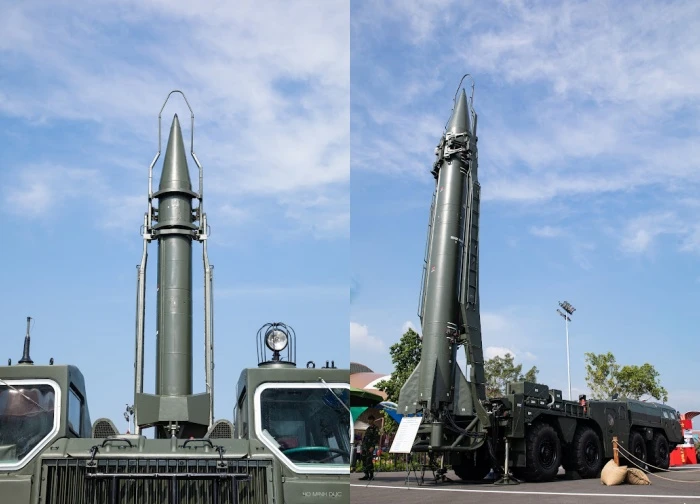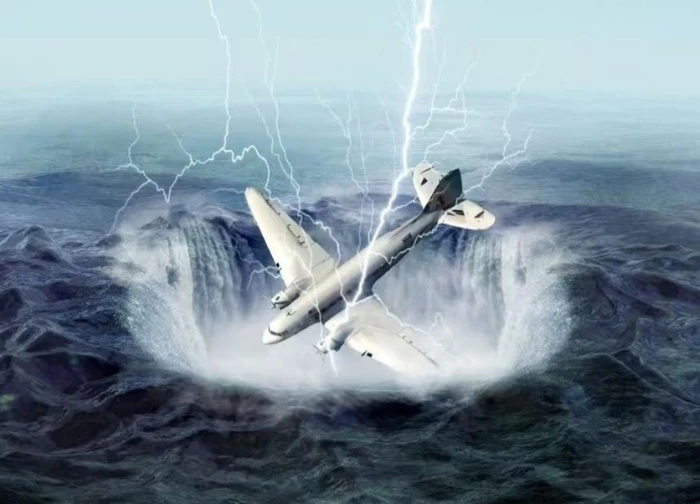Empress Dowager Tu Xi's bodyguard and lover, standing still still won against Huo Yuanjiap

1 | 0 Discuss | Share
As a rule, large aircraft are often victims of spontaneous lightning.
Lightning is an electrical discharge in the atmosphere between clouds and the ground or between clouds of different electrical charges, sometimes occurring in volcanic eruptions or dust (sand) storms. When discharged in the atmosphere, lightning can travel at a speed of 36,000km/h.
Lightning is the movement of ions but the image of lightning is produced by a stream of luminous plasma, so it can be seen before hearing the noise because the noise only travels at 1,230km/h under normal conditions. of air while light travels 299,792,458 m/s.
Lightning can reach a temperature of 30,000C, 20 times the temperature needed to turn silica sand into glass.
Airplanes attract lightning by hot air from the engine, with temperatures up to 800 degrees Celsius. The electrical strength of hot air is very low, making it easy for lightning to originate easily. This is why lightning often strikes fires on the ground.
However, it's not just that. As a rule, large aircraft are often victims of spontaneous lightning. These lightning bolts are not generated by the surrounding thunderstorm clouds, but by the discharge of electrical charges from the aircraft itself, for example, from the tail of the plane to the clouds and from the nose to the ground, in the same direction. at the time. An electric current of hundreds of thousands of amperes passes through the fuselage.
Airplanes are often struck by lightning when flying through storm clouds at an altitude of 2,000 to 5,000 meters above the ground. Patrick Smith, pilot and author of Cockpit Confidential, thinks planes are struck by lightning more times than passengers imagine. On average, an airplane is struck by lightning once every two years.
Smith commented:
"Usually a lightning bolt leaves a negligible trace, if it does, it only causes external damage or little damage to the electrical system of the aircraft. You don't even realize the plane has just been struck by lightning."
The Morgan-Botti Laboratory at Cardiff University in the UK specializes in studying the effects of lightning on aircraft materials. The laboratory's director, Professor Mamu Haddad, said: "The current in the lightning can be up to 200,000 amperes. When this number is low, passengers can hear an explosion or see a flash of light. through the window, but they won't feel anything."
Lightning - the crystallization of electronic equipment
Lightning can damage the electronics on the plane. The main danger of lightning to equipment is electromagnetic radiation. In the blink of an eye in the affected area, modern microelectronics can be partially or completely damaged. Experts say that it is better to be completely paralyzed immediately after being struck by lightning, than to remain active in a half-dead state, and then give instructions. Misinformation and instructions cause pilots to make unpredictable, disastrous decisions, and in such situations, if the pilot controls manually and intuitively, it can sometimes avoid a disaster.
According to Mr. Mamu Haddad, the most significant impact is that the metal on the fuselage can be melted where the lightning is directly, but Mr. Haddad insists that the aviation industry always has principles and checks. strictly, to minimize risks to passengers.
Since the 1930s, aircraft have been designed to provide protection against the effects of lightning. Basically, the design of the plane will ensure that lightning is scattered through points with antenna-like devices on the tips of the wings, causing electricity to flow only around the aircraft.
The fuselage is made mainly of aluminum, a material that conducts electricity well. With a gapless design on the power path, current will only flow vertically through the outer shell of the aircraft without affecting the inside. Modern aircraft are built from advanced composite materials, which are less conductive than aluminum, and will be lined with conductive fibers or membranes. Thanks to this design, the aircraft's external structure and sensitive equipment inside are both unaffected.
For modern passenger aircraft, the aircraft protection solution also includes kilometer-long wiring, equipment, computers and other controls. Components of an aircraft safety system during flight, or upon landing, must be approved by the manufacturer, according to the standards of the Federal Aviation Administration (FAA) or similar agencies in the United States. each country.
An important part of an aircraft is the fuel system, where even a small spark can cause disaster. To ensure safety, the outer shell of the fuel compartment must be thick enough, connections or screws must be tightly designed, helping to prevent electric current from passing from one area to another. Cabin doors, fuel compartment covers, air vents, piping systems and fuel lines, and engines need to be tested for lightning resistance. Today, many airlines have used a new, less explosive fuel to limit the risk of a crash.
The cone-shaped radar housing on the aircraft is a place of special protection against the impact of lightning. The radar shield is not made of conductive material, but instead has external lightning dispersion bands. This structure acts similarly to the lightning rods of buildings.
In general, planes of airlines should avoid flying over or near areas with storms and thunderstorms. During the flight, the pilot is the one who notices the slightest changes or fluctuations in weather conditions. The FAA has issued its own set of rules to ensure the safety of passenger aircraft against the effects of lightning and unusual weather conditions.
In fact, cases of light damage caused by lightning involving the nose of an aircraft wing, propeller or light navigation have been recorded in the history of world aviation.
There is a story that has been told to prove this.
Halldor Gudmundsson once saw a giant lightning bolt near his office, northwest of Keflavik International Airport in Iceland. Gudmundsson quickly turned on the camera app on his phone and started recording the moment, hoping to capture the image of bright cracks in the city sky. But suddenly a plane taking off from the airport entered his frame and immediately that plane was hit by a bolt of lightning.
However, oddly enough, that plane kept on flying and passed through the rain. "It's a very interesting scene but also a little scary," said Gudmundsson, who provided the special image below, said.
The Wow Air flight that took off from the Icelandic capital Reykjavik to Paris on 3 October landed safely and the airline confirmed to the BBC that the plane was undamaged. According to a spokesman, it is normal for planes to be struck by lightning. But how can they survive a surge of electricity as strong as billions of joules, the equivalent of a quarter of a ton of TNT?
"The outer shell of the cabin and the interior of the aircraft is designed to conduct electricity but also to insulate the current from the crew, passengers, and electronics inside" - Chris Hammond, a retired pilot and member of the British Airline Pilots Association (Balpa).
"There's a metal mesh on the inside of the fuselage, a kind of fine wire mesh and that's how the electricity is moved," he said.
In addition, the electrical networks and connections to the material storage compartments have many outer layers of shielding to closely protect against the risk of electric shock due to external influences. All of these mechanisms are thoroughly tested before the aircraft is put into service - a process that involves creating artificial lightning bolts that impact the aircraft's skin and internal components.
Hammond said: "The image Gudmundsson captured is an example that everything is still working normally. The lightning appears to have hit the front of the plane and then exited by the tail and part of the wing. Like a flying Faraday Cage, everything inside is protected."
However, a lightning bolt is very easy to detect by the passengers on the plane. For example, passengers on two flights that were struck by lightning over west London in April said they heard a loud crash.
Years ago, planes were not completely protected from lightning. Hammond remembers one time he was flying an old plane while waiting to land in San Francisco. Suddenly, his plane was hit by a very strong lightning bolt.
"All the screens are down," Hammond said.
But fortunately that plane was equipped with devices with similar functions. After that, the plane was able to land safely after the computer system gradually returned to operation.
When is lightning more dangerous - in flight or during takeoff or landing?
It is known that lightning is very dangerous for low-flying aircraft, because then, the aircraft can act as a conductor for the lightning current from the cloud to the ground. Experts say that aircraft at high altitude are often struck by lightning, but very rarely lead to disaster. But there have been many cases of aircraft being struck by lightning during takeoff and landing, even while on the ground, and the consequences are huge.
Efforts to reduce risk
To minimize the chance of being struck by lightning, every modern aircraft is subjected to lightning current exposure tests. An electric current of the same magnitude as lightning in a thunderstorm (about 200,000 amps) is passed through the fuselage. And not 1, but 2, 3 pulses. In fact, lightning often follows the same path over and over again. After testing with current, everything will be tested again. Particularly vulnerable points are the fuel tank, antenna, and external sensors. Flight safety depends directly on them, and it can be very difficult to hide them from lightning.
To reduce the risk of being hit by lightning, the metal elements of the aircraft's outer shell are electrically connected together and the non-metallic elements are all metallized. As a result, it is possible to lower the resistance of the fuselage. To avoid being targeted by lightning and other atmospheric currents, the aircraft is equipped with electrical discharge devices.
Scientists admit that in general today, despite a great deal of modern knowledge and advanced machinery, solutions to atmospheric electricity problems, including lightning and thunderstorms, are not much better than with a century ago.
Ly Tieu Lo - Back with a 13-year-old lover?  team youtube17:04:03 03/03/2021Chinese social networks are buzzing with information that Ly Tieu Lo is back with PGone, who is 13 years younger than her lover after divorcing Jia Nai Luong. After the divorce, Ly Tieu Lo's suspicious moves constantly made the media and fans speculate. There have been many rumors that this beauty has returned...
team youtube17:04:03 03/03/2021Chinese social networks are buzzing with information that Ly Tieu Lo is back with PGone, who is 13 years younger than her lover after divorcing Jia Nai Luong. After the divorce, Ly Tieu Lo's suspicious moves constantly made the media and fans speculate. There have been many rumors that this beauty has returned...

1 | 0 Discuss | Share

4 | 0 Discuss | Share

4 | 0 Discuss | Share

1 | 0 Discuss | Share

2 | 0 Discuss | Share

4 | 0 Discuss | Share

2 | 0 Discuss | Share

1 | 0 Discuss | Share

1 | 0 Discuss | Share

2 | 0 Discuss | Share

2 | 0 Discuss | Share

1 | 0 Discuss | Share










3 | 0 Discuss | Report